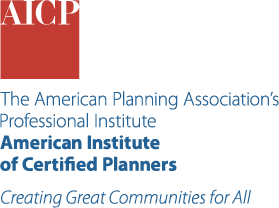100 Essential Books of Planning: Decade Ten
2000-2009
Planners take a new look at transportation and the form of communities inspired by creative and critical thinking. As substantial social changes manifest themselves in communities, planners bring more precise tools and analysis to bear. A new boldness and scope distinguishes publications on regionalism and design standards.
Bowling Alone
The Collapse and Revival of American Community
Robert Putnam
2000
The book described a major shift in American life and politics that had largely gone unnoticed. Putnam examined the past 40 years and observed that social participation had changed. Because of the modern demands on time, established volunteer associations important to the community fabric had lost significant membership. The book provoked debate and awakened insight into how people live their lives, expect services, and contribute to the community, and what they expect of government and politics.
The Regional City
Planning for the End of Sprawl
Peter Calthorpe, William Fulton
2000
Regionalism as a focus of planning reemerged in this work that demonstrated how regional planning and design can integrate, revitalize, and provide a coherent vision for growth. Many of the concepts of new urbanism were extended to the regional scale and include a special emphasis on transit and design.
Planning Theory for Practitioners
Michael P. Brooks
2002
Brooks brought planning theory to an understandable, usable level for practitioners. His discussion of values and ethics were especially informative.
The Rise of the Creative Class
And How It's Transforming Work, Leisure, Community and Everyday Life
Richard Florida
2002
While others came before Florida and developed the evaluation methods and tools in the book, the author was the first to put the information together in a compelling and understandable format. The book revolutionized today's urban planning and economic development field. It reawakened decision makers in America to the value and power of strong central cities.
The Birth of City Planning in the United States, 1840-1917
Jon A. Peterson
2003
Peterson provides the best and most detailed overview of the early years of the planning movement, which saw Progressive activists, public-health advocates, and business interests unite in the cause of more livable cities.
The Devil in the White City
Murder, Magic, and Madness at the Fair that Changed America
Erik Larson
2004
The book brings alive the history of early planners, including Daniel Burnham and Frederick Law Olmsted, for a general audience. He draws attention to work many still know nothing about. In vivid — and sometimes graphic detail — Larson paints a poignant and convincing story of the obstacles planners and architects face when approaching mammoth projects, not least of which a world's fair.
The High Cost of Free Parking
Donald C. Shoup
2005
Donald Shoup set the world of traffic management on its ear with his impassioned and thorough demolition of decades of conventional wisdom. By demonstrating the direct, indirect, social, and intangible costs of easily available parking, Shoup set the stage for municipalities to change their codes and mind-sets to create parking management systems that put cars second and instead support the creation of complete streets, safe streetscapes, and healthier downtowns.
Urban Transit
Operations, Planning, and Economics
Vukan R. Vuchic
2005
This comprehensive work covers the full range of issues involved in the operation, planning, and financing of transit systems. Vuchic presents both theoretical concepts and practical, real world methodologies for managing and improving transit planning.
Planning and Urban Design Standards
William R. Klein, Executive Editor
Megan Lewis, Managing Editor
2006
The most comprehensive reference book on urban planning, design, and development available today. The book comprises contributions from more than 200 renowned professionals and provides in-depth information on the tools and techniques used to achieve planning and design outcomes, including economic analysis, mapping, visualization, legal foundations, and real estate developments.


